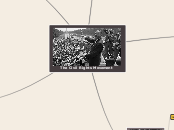av Laura McGuire för 8 årar sedan
2953
The Civil Rights Movement
The Civil Rights Movement covers the strategies and social movements in the US aimed to end racial segregation and discrimination against African Americans.

av Laura McGuire för 8 årar sedan
2953

Mer av detta
The interactive monuments preformed by the students will serve as the formative assessment for this lesson because each & every student will be participating & the teacher will be able to see how the students prepared for the performance, if they understood who their civil rights hero was & how they contributed to the civil rights movement. Students will be graded on their interactive monument performances using a rubric. Students will be graded as a group, rather than individually. Grading students as a group will motivate students to give it their all & make the performance as realistic & believable as possible. The discussions that take place after each group performance will also serve as a formative assessment. The teacher will be able to ask questions to check for student learning, as well as spark conversation among the rest of the class. Again, this is a great way to get students engaged in the lesson.
The summative assessment for this lesson will be the upcoming unit test they will have to take on all of the information that has been covered thus far. The unit test will consist of multiple-choice/true-false/fill-in-the-blank & short-response questions. This will allow the teacher to see how much of the material students were able to retain.
The group discussions that take place during this lesson will serve as the formative assessment. The teacher will walk around the room while the students are analyzing the graphs & make sure that they are interpreting the information correctly & that they are using critical thinking skills to answer the questions on their handouts.
The class discussion that takes place after the group activity will also serve as a formative assessment. The teacher will be able to gauge student learning & ensure that every student is able to connect the dots & understand the big idea for this lesson. Tapping into students' conceptual knowledge is critical as the unit comes to an end.
The Venn diagram handout will serve as the summative assessment for this lesson. It will be assigned as homework & due the following day. The handout will be collected & graded. It will allow the teacher to see whether or not the students were able to take the information from the primary sources & use it to make inferences about Martin Luther King, Jr. & Malcolm X.
The open class discussion at the beginning of class will serve as a formative assessment for this lesson. Students will show me what they have retained from prior lesson content, as well as areas of their prior knowledge that they can relate to this lesson. Additionally, the written analysis of the primary sources from the students during their group work will serve as another formative assessment. This will allow me to assess how well they were able to analyze the sources and understand the importance of each.
In this lesson there will be two forms of a summative assessment. The students foldable activity will be collected and graded. This assessment will allow the teacher to gauge whether students were able to use the information from the reading and apply it into their activity. The second will be the journal entry that they will turn in the next day. Students will turn in a journal entry addressing one thing that they found interesting during the reading & one thing that they did not quite understand or would like more information about. This will allow the teacher to see what their students found intriguing, allowing them to adapt future lessons to spark student interest. In addition, the teacher will be able to evaluate & analyze whether or not the students understood the material that was read in class.
:Students' responses to questions throughout the reading will serve as their formative assessment for this lesson. Students will be able to show the teacher what connections they are able to make & what ideas they might have.
Students’ responses in their composition book will serve as their summative assessment because it will allow the teacher to gauge whether students are able to synthesize what they have learned and create an argument for it. The teacher will be able to see how students grasped the content and if they are ready to move onto the next lesson.
The questions throughout the lecture will serve as the students' formative assessment. During think-pair-share activities, the teacher will walk around the room & listen to the conversations taking place among students.